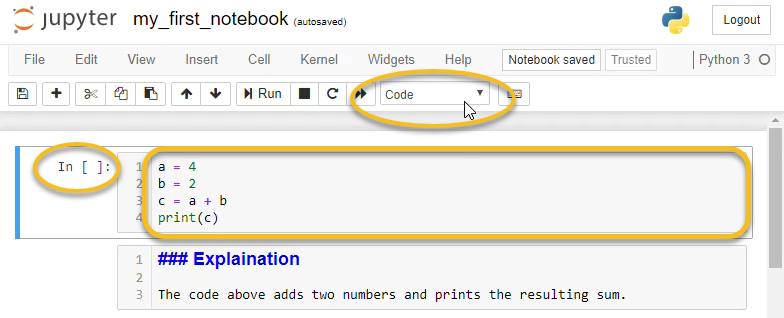
- #PYTHON JUPYTER NOTEBOOK BROKEN PIPE ERRNO 32 HTML HOW TO#
- #PYTHON JUPYTER NOTEBOOK BROKEN PIPE ERRNO 32 HTML CODE#
You could catch the broken pipe? This writes the file to stdout line by line until the pipe is closed. I haven't reproduced the issue, but perhaps this method would solve it: (writing line by line to stdout rather than using print) import sys Using the signal module allows just that, as stated in akhan's answer signal.signal() takes a signal to handle as the 1st argument and a handler as the 2nd special handler value SIG_DFL represents the system's default behavior: from signal import signal, SIGPIPE, SIG_DFL In many cases this is more disruptive than helpful, so reverting to the default behavior is desirable:
#PYTHON JUPYTER NOTEBOOK BROKEN PIPE ERRNO 32 HTML CODE#
If a Python script does not catch it, Python outputs error message IOError: Broken pipe and terminates the script with exit code 1 - this is the symptom the OP saw.
#PYTHON JUPYTER NOTEBOOK BROKEN PIPE ERRNO 32 HTML HOW TO#


This subject is touched upon in Python 2 documentation for multiprocessing: Programming Guidelines, Windows.

However, the real way around this problem lies in re-factoring your code to comply to Python’s Windows-specific multiprocessing guidelines as discussed here in this StackOverflow thread. Return _default_context.get_context().Process._Popen(process_obj)įile “D:\Anaconda\Anaconda3\lib\multiprocessing\context.p y”, line 322, in _Popenįile “D:\Anaconda\Anaconda3\lib\multiprocessing\popen_spawn_win32.p y”, line 65, in initįile “D:\Anaconda\Anaconda3\lib\multiprocessing\reduction.p y”, line 60, in dumpĬould you give me any advise to help me run “cifar10_tutorial.py” successfully? By the way, other examples in “Deep Learning with PyTorch: A 60 Minute Blitz” have been run suceessfully. Runfile(‘D:/PyTorch/Code/LearnPyTorch/cifar10_tutorial.py’, wdir=‘D:/PyTorch/Code/LearnPyTorch’)įile “D:\Anaconda\Anaconda3\lib\site-packages\spyder\utils\site\sitecustomize.p y”, line 880, in runfileįile “D:\Anaconda\Anaconda3\lib\site-packages\spyder\utils\site\sitecustomize.p y”, line 102, in execfileĮxec(compile(f.read(), filename, ‘exec’), namespace)įile “D:/PyTorch/Code/LearnPyTorch/cifar10_tutorial.py”, line 99, inįile “D:\Anaconda\Anaconda3\lib\site-packages\torch\utils\data\dataloader.p y”, line 303, in iterįile “D:\Anaconda\Anaconda3\lib\site-packages\torch\utils\data\dataloader.p y”, line 162, in initįile “D:\Anaconda\Anaconda3\lib\multiprocessing\process.p y”, line 105, in startįile “D:\Anaconda\Anaconda3\lib\multiprocessing\context.p y”, line 223, in _Popen When I run this file in Spyder on Windows10, it reports"BrokenPipeError: Broken pipe”, the details information are as follows:


 0 kommentar(er)
0 kommentar(er)
